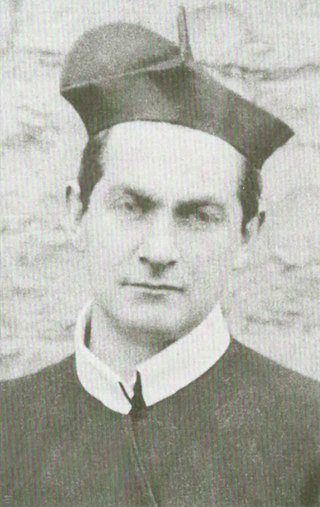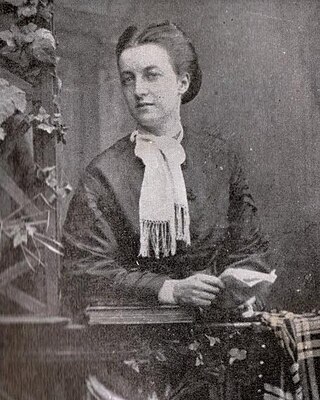Related Research Articles

The Redemptorists officially named the Congregation of the Most Holy Redeemer, abbreviated CSsR, is a Catholic clerical religious congregation of pontifical right for men. It was founded by Alphonsus Liguori at Scala, Italy, for the purpose of labouring among the neglected country people around Naples. It is dedicated to missionary work and they minister in more than 100 countries. Members of the congregation are Catholic priests and consecrated religious brothers.

Crescent College Comprehensive SJ, formerly known as the College of the Sacred Heart, is a Catholic secondary school located on 40 acres (160,000 m2) of parkland at Dooradoyle, Limerick, Ireland. The college is one of a number of Jesuit schools in Ireland.
The Limerick boycott, also known as the Limerick pogrom, was an economic boycott waged against the small Jewish community in Limerick, Ireland, between 1904 and 1906. It was accompanied by assaults, stone throwing and intimidation, which caused many Jews to leave the city. It was instigated in 1904 by a Redemptorist priest, Father John Creagh. According to a report by the Royal Irish Constabulary, five Jewish families left Limerick "owing directly to the agitation" while another 26 families remained.

The Bishop of Limerick is an episcopal title which takes its name after the city of Limerick in the Province of Munster, Ireland. In the Roman Catholic Church it still continues as a separate title, but in the Church of Ireland it has been united with other bishoprics.
Richard Creagh was an Irish Roman Catholic clergyman who was the Archbishop of Armagh and Primate of All Ireland during the reign of Queen Elizabeth I. Along with the other Irish Catholic Martyrs, Archbishop Creagh is under investigation for possible Roman Catholic Sainthood. His current title is Servant of God.

Kilcornan is a civil parish in County Limerick. It is about seventeen kilometres west of Limerick city on the N69 road. According to the 2011 census of Ireland the population of the Kilcornan Electoral Division was 749, an increase of 11.6% since 2006. There is a Catholic church and a National School on the main road as well as a public house. Apart from Curraghchase, the ancestral home of the Victorian Poet Aubrey de Vere, the next most visited tourism site in Kilcornan is the Stonehall Visitor Park. There is also a go kart track. It is located across the River Shannon from Shannon Airport, County Clare.
Michael Joseph Begley was an American prelate of the Roman Catholic Church. He was the first bishop of the Diocese of Charlotte in North Carolina, serving from 1972 until 1984.

John Creagh, CsSr was an Irish Redemptorist priest. Creagh is best known for, firstly, delivering antisemitic speeches in 1904 responsible for inciting riots against the small Jewish community in Limerick, as well as, secondly, his work as a Catholic missionary in the Kimberley region of Western Australia between 1916 and 1922.

Stephen Creagh Sandes (1778-1842) was a Church of Ireland bishop in the Nineteenth century.
The High Sheriff of Limerick City was the Sovereign's judicial representative in the city of the City of Limerick. Initially an office for lifetime, assigned by the Sovereign, the High Sheriff became annually appointed from the Provisions of Oxford in 1258. Besides his judicial importance, he had ceremonial and administrative functions and executed High Court Writs. The office was abolished in 1920 on the formation of the Irish Free State.
John Dunmoe BDec was a Canon of Windsor from 1450 to 1455 and Archdeacon of Gloucester from 1487 to 1489 and Bishop of Limerick from 1486 to 1489.
Thomas Arthur was a Roman Catholic prelate who served as Bishop of Limerick (1469–1486).
Gillebert ; c. 1070–1145) was an Irish Roman Catholic prelate who served as the Bishop of Limerick from 1106 to 1140.
James Dowley was an Irish Roman Catholic prelate who served as the Bishop of Limerick from 1720 to 1737.
Richard Arthurc. 1560–4 May 1646) was an Irish Roman Catholic prelate who was Bishop of Limerick from 1623 to 1646.
Peter Creagh or Piers Crevens was an Irish Roman Catholic bishop in the late 17th and early 18th centuries.

The Diocese of Tuam, Limerick and Killaloe is a diocese of the Church of Ireland that is located in the west of Ireland. The diocese was formed by a merger of the former Diocese of Tuam, Killala and Achonry and the former Diocese of Limerick and Killaloe in 2022, after the retirement of the separate dioceses' bishops and the appointment of Michael Burrows as bishop of the united diocese. It is in the ecclesiastical province of Dublin. It is one of the eleven Church of Ireland dioceses that cover the whole of Ireland. The largest diocese by area in the Church of Ireland, it covers all of counties Clare, Galway, Kerry, Limerick and Mayo, plus parts of counties Cork, Sligo, Roscommon, Offaly, Laois and Tipperary.
John Folan was the Roman Catholic Bishop of Limerick from 1489 until his death.
Thomas Leger was a Roman Catholic prelate who briefly served as Bishop of Limerick.
Cornelius O'Boylec. 1547– 1591) was an Irish Roman Catholic prelate who was Bishop of Limerick from 1582 to 1591.
References
- ↑ "Bishop William Creagh (Russell)". Catholic Hierarchy.
- ↑ Begley, John (1906). The Diocese of Limerick, Ancient and Medieval. Dublin: Browne & Nolan. p. 299.